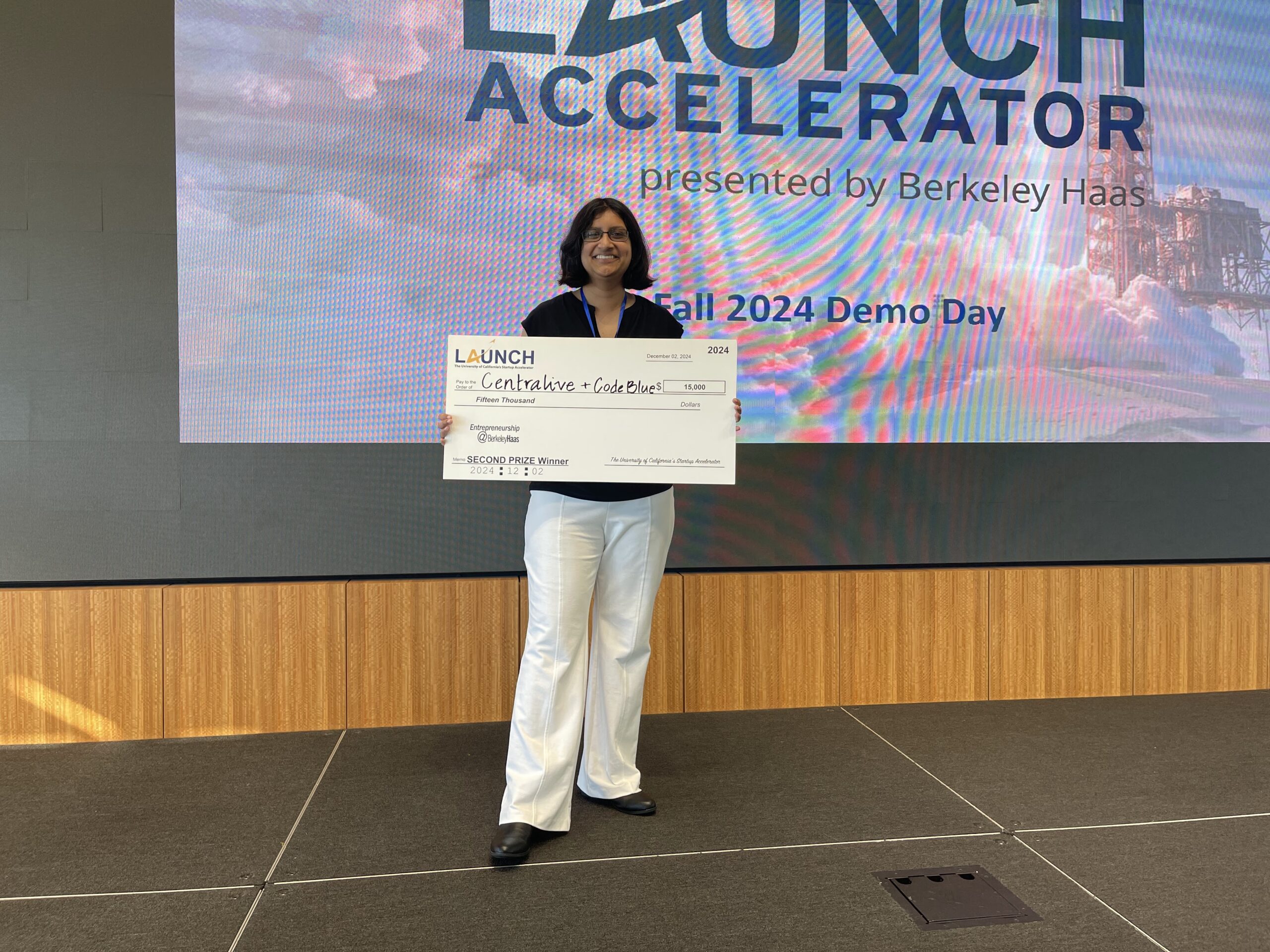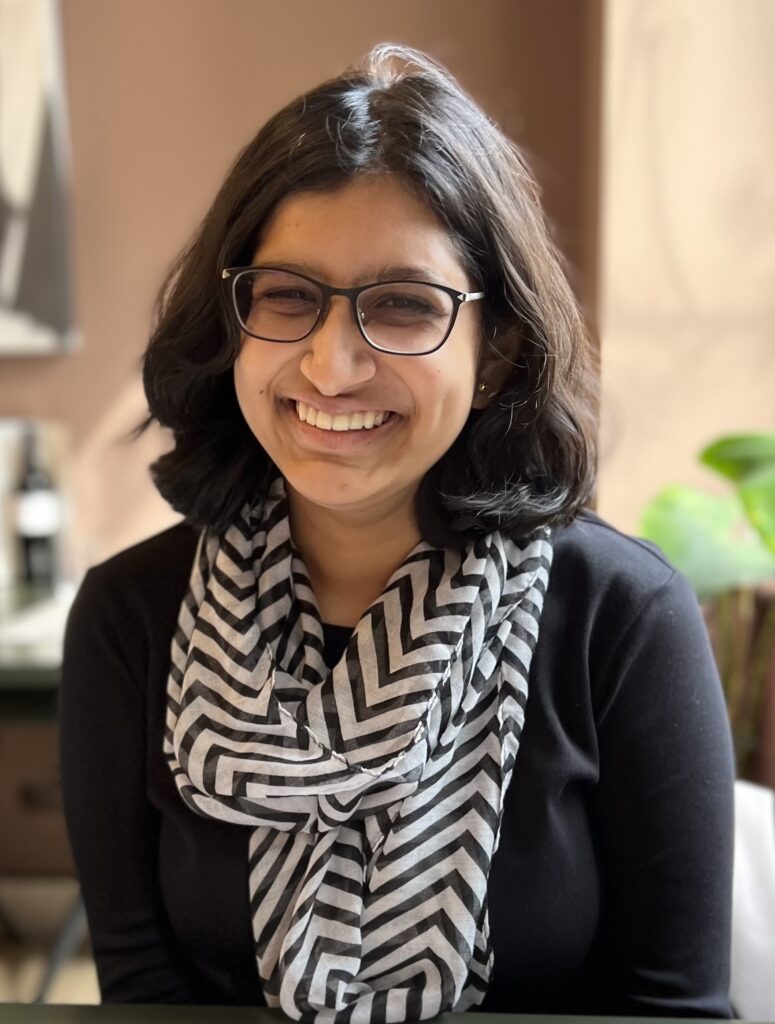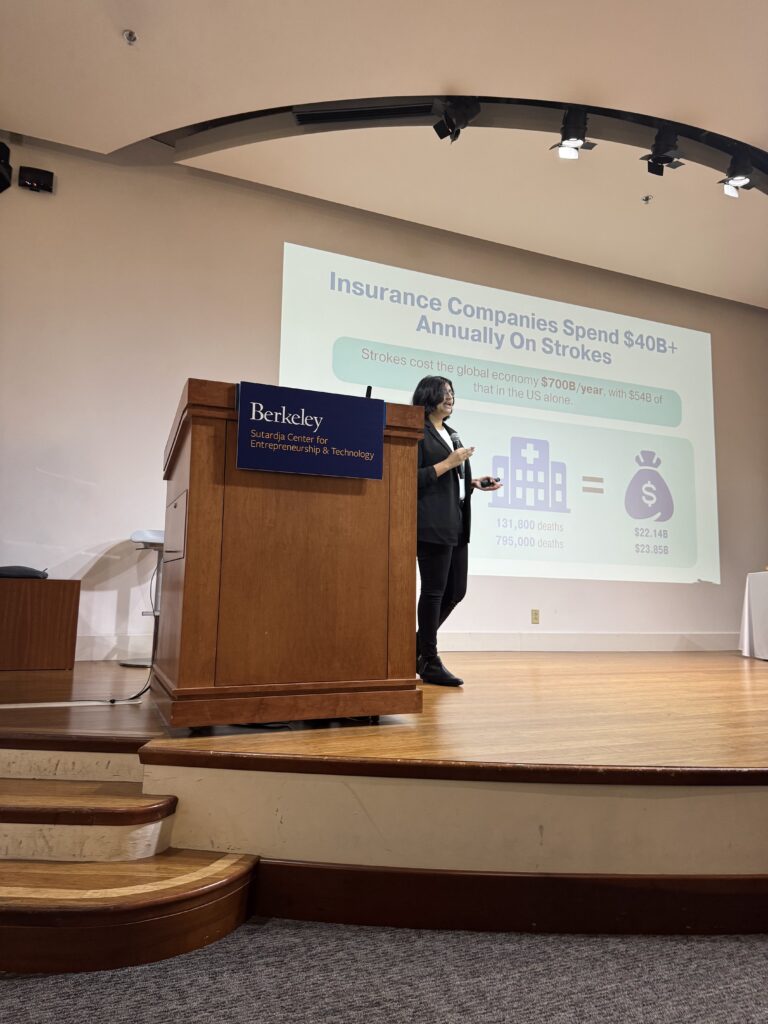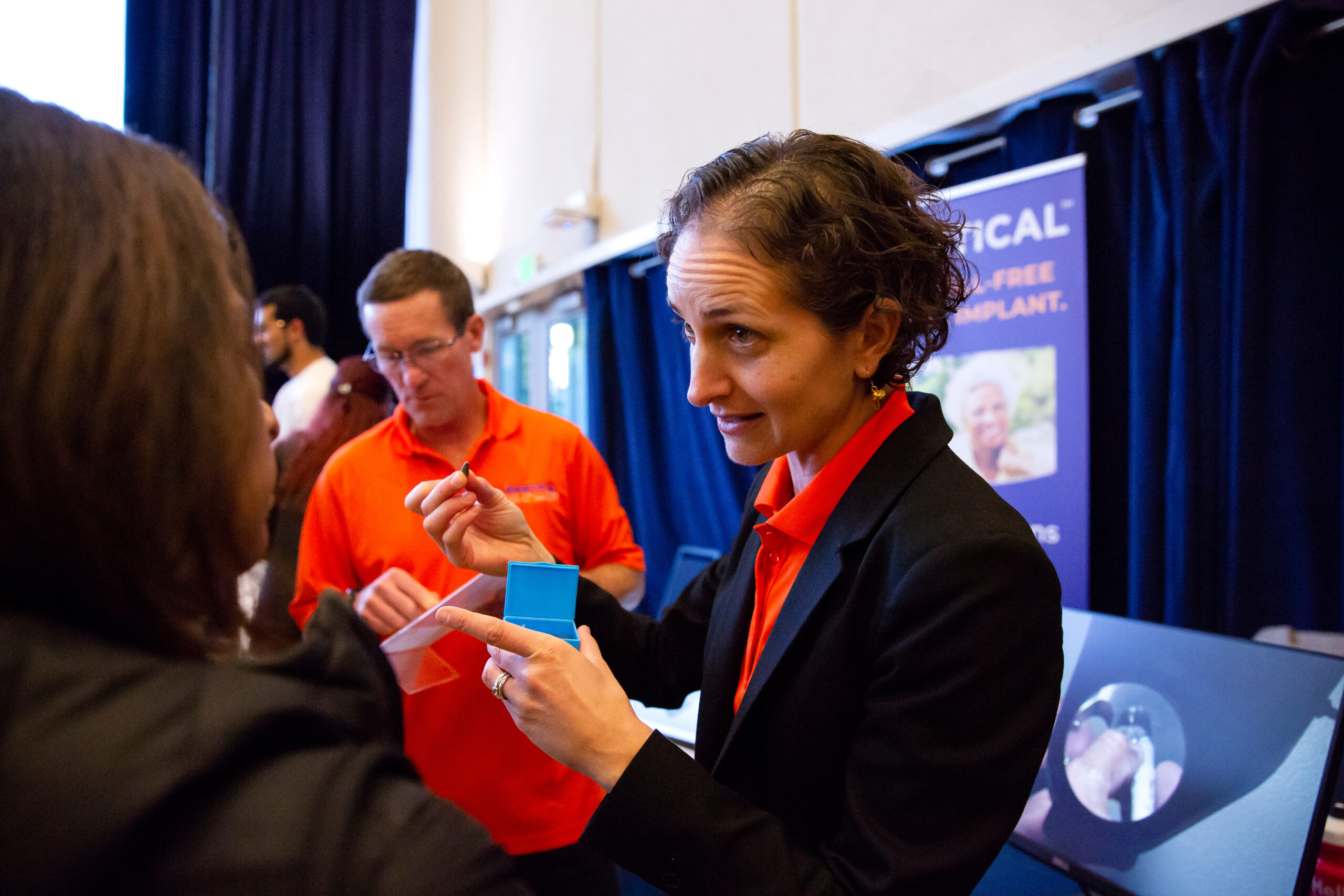With AI and an iPhone, UC Berkeley student’s startup aims to detect stroke signs and save lives
Using smartphones, computers and other smart devices, Ashmita Kumar's startup aims to shake up stroke health care, with ambitious plans to grow.

Courtesy of Ashmita Kumar
March 27, 2025
Key takeaways
- Code Blue is a UC Berkeley student’s startup that uses a person’s phone and computer microphone and camera to detect early signs of strokes.
- The program can also call for help, preventing treatment delays.
- Its founder, Ashmita Kumar, will compete for the ACC InVenture Prize on April 2.
Ashmita Kumar was eight years old when her grandfather suffered a stroke that left him unable to walk or talk. He didn’t recognize the telltale signs — the drooping face and slurred speech — so he put off seeking medical help. By the time he finally saw a doctor, Kumar said the stroke’s effects were so severe he couldn’t even recognize his own family.
So Kumar was especially alarmed when, in 2021, half of her father’s face began to sag. Stroke risks ran in her family, and they both recognized the signs. But her father was less aware than she was of the importance of seeking immediate medical attention.

Luckily, her father’s condition proved not to be a stroke. But it left Kumar wondering: What if there was a way to detect stroke signs and seek medical help with devices we already own?
That question led Kumar, now a third-year undergraduate at UC Berkeley, to found Code Blue, a startup that uses cameras and microphones on cell phones, computers and smart devices, along with artificial intelligence, to alert the user to early signs of a stroke — before the person is aware of them. Code Blue can also call for emergency help, potentially minimizing the devastating effects caused by treatment delays.
“Everybody has devices now, especially after COVID, and telehealth has taken off,” said Kumar, who’s studying electrical engineering and computer sciences. “So why don’t we use that as a way to make sure that people, when they experience a stroke, can use those existing devices to get treatment when they need it?”
Kumar pitched the idea at an innovation summit in 2023 and was overwhelmed by the interest from attendees. People approached her and her small group of supporters and developers and shared stories about loved ones who would have benefited from this kind of technology.
“After hearing all of that,” Kumar said, “we knew we owed it to everybody to do our best and try to build it.”
More than 795,000 people in the U.S. have a stroke each year, according to the Centers for Disease Control and Prevention. Someone dies from a stroke every three minutes. But patients who arrive at an emergency room within three hours of their first symptoms often experience fewer long-lasting disabilities three months after a stroke than those who receive delayed care.
Hospitals use diagnostic tools to detect strokes, and some medical systems are leveraging AI to quickly evaluate CT scans to detect abnormalities in the brain. But these do not solve the problem of getting people to recognize the signs in the first place.
If I hadn’t gone to Berkeley, none of this would have happened.
Ashmita Kumar, UC Berkeley student
Code Blue puts monitoring technology on the devices we use every day.
Doctors can prescribe the tool for patients who may be at an elevated risk of stroke. That allows these patients to activate the Code Blue program on their smartphones, computers or TVs. The program then analyzes their speech and facial images every 30 seconds and monitors changes, like slurred words or asymmetrical facial expressions.
“The idea is that you set it up, and then you forget about it,” Kumar said.
On the back end, the images and sounds are analyzed for patterns and then immediately deleted, Kumar said. In order to protect patient privacy, no images or speech data are stored; only the patterns used to compare the data over time remain.
The program alerts users if signs of a stroke are detected. It can also notify emergency services that a patient may be suffering a stroke, ensuring that first responders know to transport the patient to a facility that has proper care teams and enhanced testing tools.

Courtesy of Ashmita Kumar
Kumar is working with a team of doctors at UC San Francisco to pilot test the program with five patients. She intends to soon grow the test participant size to about 100 patients. Her team is also seeking approvals from the FDA to allow the technology to be more widely adopted, similar to other consumer electronics like the Apple Watch that can detect heartbeat abnormalities.
“Ashmita’s work is a great example of Berkeley students using technology and innovation for the greater good,” said Darren Cooke, UC Berkeley’s interim chief innovation and entrepreneurship officer. “Code Blue is also an example of a team that’s benefited from many of UC Berkeley’s entrepreneurship-supporting resources.”
Since her initial pitch in 2023, Kumar has tapped a number of Berkeley programs to help entrepreneurial students launch companies and create real products out of their ideas. She participated in contests at the campus’s Sutardja Center for Entrepreneurship and Technology and was the grand prize winner last year in the Blum Center’s Big Ideas Contest. She’s also attended the National Science Foundation I-Corps boot camp, which helps university scientists and engineers commercialize innovations, and she’s been a part of the UC Launchathon at Berkeley Haas and Berkeley’s SkyDeck Pad-13 incubator.
Next, Kumar will compete Wednesday, April 2, against entrepreneurs from universities across the country for the Atlantic Coast Conference InVenture Prize. Participants will pitch their ideas to a live audience and a panel of judges at the University of Notre Dame, vying for $30,000 in prizes and bragging rights as the ACC InVenture Prize winner. That day, the contest will be broadcast live in the Bay Area on KQED beginning at 4 p.m.
“We’ve been a part of a lot of Berkeley’s startup ecosystem,” Kumar said. “I honestly think if I hadn’t gone to Berkeley, none of this would have happened.”
